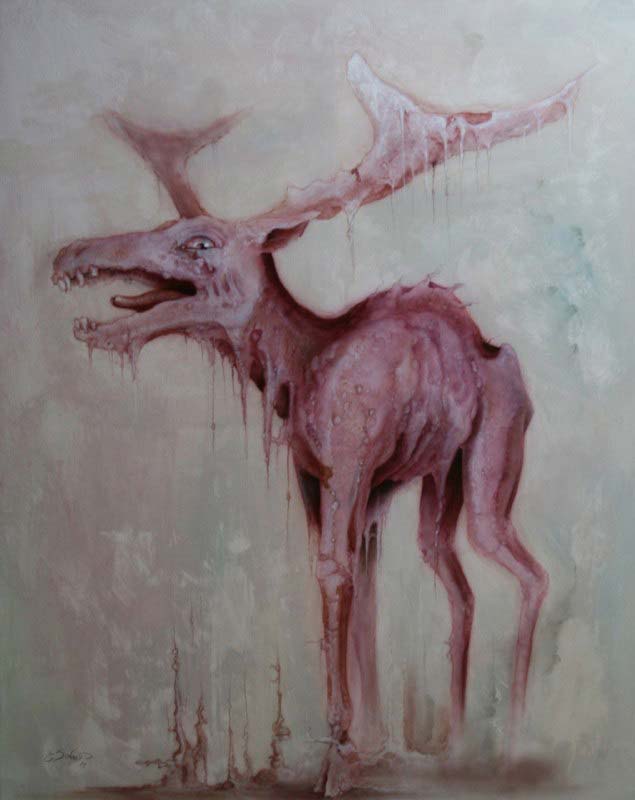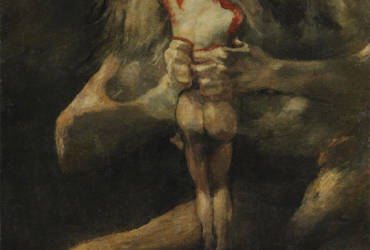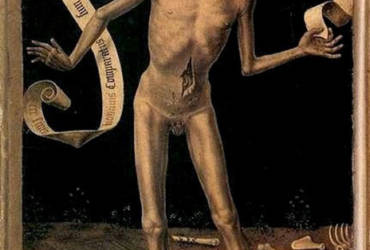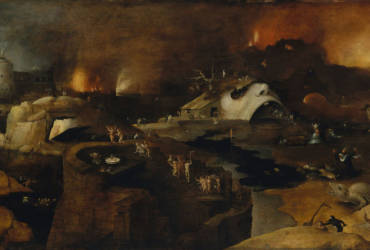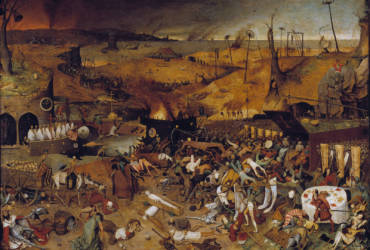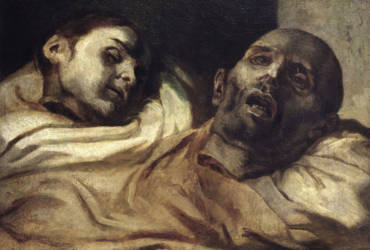Dark Art Movement
In the Dark Art Movement the artist transmits his thoughts in a very mysterious way and, occasionally, combining surrealist elements. Horrible acts and macabre scenes make us stop and think about ourselves. Visually stunning scenes, where the black predominates over all colors. An attempt to understand more deeply the human nature, this primary side of the human being that we thought forgotten but which still confuses us with his impulses.
Dark art is closely related to critical art or protest art, because each work of this movement differs from a particular cause or message. It’s a movement to spread a message to the public declaring a complaint or criticism. For this reason, on many occasions dark art provokes controversy and dispute from viewers who don’t know or don’t understand the original message of the artwork.
Example
In the work Rui by Ed Schaap, we see an animal that is skinned, frightened and in pain due to the torture to which it is subjected. With this sad image, the artist tries to represent the pain and cruelty to which humans subject other animals by skinning them, sometimes even when they are still alive.
With this disturbing and shocking image, the artist tries to capture the attention of the viewer and make them think about the unnecessary damage we are doing today to animals with fur farming, simply to be able to have useless clothes and accessories. The immorality of materialism.
However, if we observe this image out of context, the viewer may think that it’s an apology to fur farming, to the torture of animals, or that the artist (who in this case is a vegan) enjoys painting these macabre scenes. For this reason, the works of art listed on Dark Art Movement can provoke controversy, polemic. The debate in the fine arts is always welcome, as long as there is knowledge of the message and the original context of the work to be discussed.
Understanding the characteristics of the dark art, we can understand that it is also closely linked to contemporary art, since they show current scenes that we live in today. Throughout history, we find famous artists who were also contemporaries of their time and wanted to show the darkest and most terrifying side of their experiences, being able to label these works within the dark art, or rather, the predecessors of the dark art movement .
The Dark Art Movement is rooted in the legacy of great artists of the history, such as:
- Hans Memling (1430 – 1494, Germany)
- Hieronymus Bosch (1450 – 1516, Netherlands)
- Pieter Bruegel the Elder (1525/1530 – 1569, Netherlands)
- Francis Bacon (1909 – 1992, Ireland)
- Caravaggio (1571 – 1610, Italy)
- Salvator Rosa (1615 – 1673, Italy)
- Henry Fuseli (1741 – 1825, Switzerland)
- Francisco Goya (1746 – 1828, Spain)
- Théodore Géricault (1791 – 1824, France)
- Bouguereau (1825 – 1905, France)
- Salvador Dalí (1904 – 1989, Spain)
- Zdzisław Beksiński (1929 – 2005, Poland)
- H. R. Giger (1940 – 2014, Switzerland)
The Dark Art Movement is also very influenced by macabre art, which is the quality of having a grim or ghastly atmosphere. The macabre works to emphasize the details and symbols of death. The term also refers to works particularly gruesome in nature.
Of course the Danse Macabre is another of the artistic genres that have influenced the modern dark art. The Danse Macabre consists of the dead or a personification of death summoning representatives from all walks of life to dance along to the grave. They were produced to remind people of the fragility of their lives and how vain were the glories of earthly life. During the Middle Ages in Europe, the omnipresent possibility of sudden and painful death increased the religious desire for penance, but it also evoked a hysterical desire for amusement while still possible; a last dance as cold comfort. The Danse Macabre combines both desires.
Our mission is to consolidate dark art as a recognized art movement
About Us
We are the first and only art organization devoted solely to the Dark Art Movement. An international nonprofit membership organization created to promote the dark art in all its variants, and to support the worldwide community of artists who work in this artistic genre. We strive to stimulate communication among artists, educators, students, collectors, gallery and museum personnel, art critics, and all others interested in and involved with the Dark Art Movement.
The Dark Art Movement comprises about 50 individual member artists as well as corporate members in the United States and around the world. It is managed by a governing board of 6 members who volunteer their time and effort to help run this organization.
· CEO & Founder – Alberto Sisí
· Marketing Director – Allan Hook
· Corp. Relations Director – Ruth Collins
· Membership Director – Kate Ashton
· Art Curator – Sarah Myers
· Art Curator – Kristen B. Torres
Working on a international scale, Dark Art Movement is able to provide credibility for the entire organization and all it’s artists, and gain attention for dark art in major art publications.
Dark Art Movement is actively online to stay in touch and keep its membership informed. In addition to this website containing extensive information about the dark art movement, we share news and artworks through our social networks, and advertising campaigns on third-party sites.
